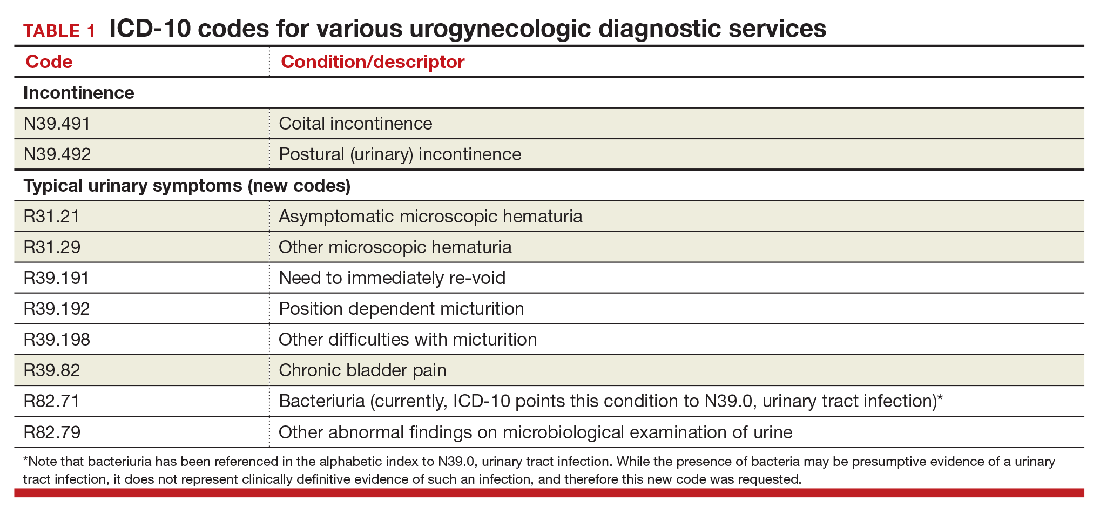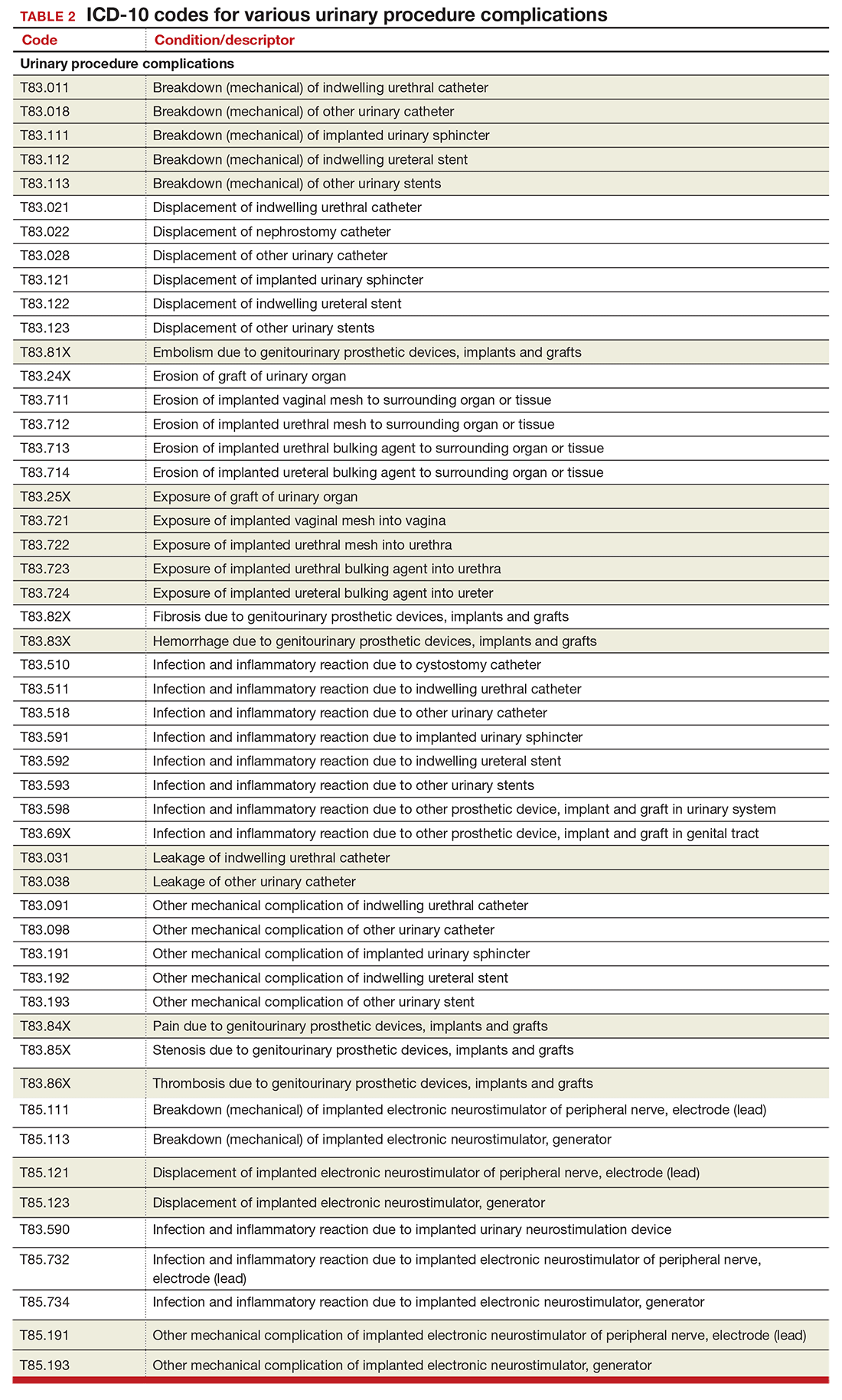In the August 2016 issue of OBG Management, I wrote about the International Classification of Diseases, Tenth Revision, Clinical Modification (ICD-10) coding changes that will occur for obstetric services, and now it is time to tackle gynecologic services. The changes cover the gamut of issues that could not be addressed with the initial implementation of ICD-10, including codes for contraception, prepubertal issues, postoperative complications, and urinary symptoms, to name a few.
Urogynecology diagnostic codes
Urogynecologists will find a large number of changes to codes they can select on October 1, 2016. While some codes improve reporting for conditions or symptoms related to urinary issues, many more concern postoperative complications following surgery for devices and grafts applied to the genitourinary system.
The American Urological Association requested new codes to align with a 2009 joint report on the terminology for female pelvic floor dysfunction.1 These codes, along with others, are listed in TABLE 1.
Urinary procedure complication codes
Not every urogynecologist will have an issue after surgery for incontinence, but if they do, there are tons of new and revised codes to address every possible complication the patient may have (TABLE 2). Each of these codes is reported based on whether the complication is being actively treated (initial encounter: final character is A), is being followed up after treatment (subsequent encounter: final character is D), or is caused by another condition (sequela: final character is S).




